All About Bhadra Wildlife Sanctuary and National Tiger Reserve
The Bhadra Wildlife Sanctuary and National Park Tiger Reserve are named after the Bhadra River, which flows within the forest. This wildlife forest on the Western Ghats has everything from tigers to gorgeous birds. This forest shares a border with Karnataka’s Chikmagalur and Shimoga districts.
This guide will discuss the timings, stay, animals, entry fee, how to reach it, and the best time to visit Bhadra Wildlife Sanctuary in Karnataka.
Muthodi and Lakkavalli are the two main regions that fall within this Sanctuary. This Indian forest first received sanctuary status from the Mysore Government in 1951 as the Jagara Valley Wildlife Sanctuary, and it was later reconstituted and renamed Bhadra Wildlife Sanctuary in 1974. Thus, Bhadra Wildlife Sanctuary is also known as Muthodi Forest.
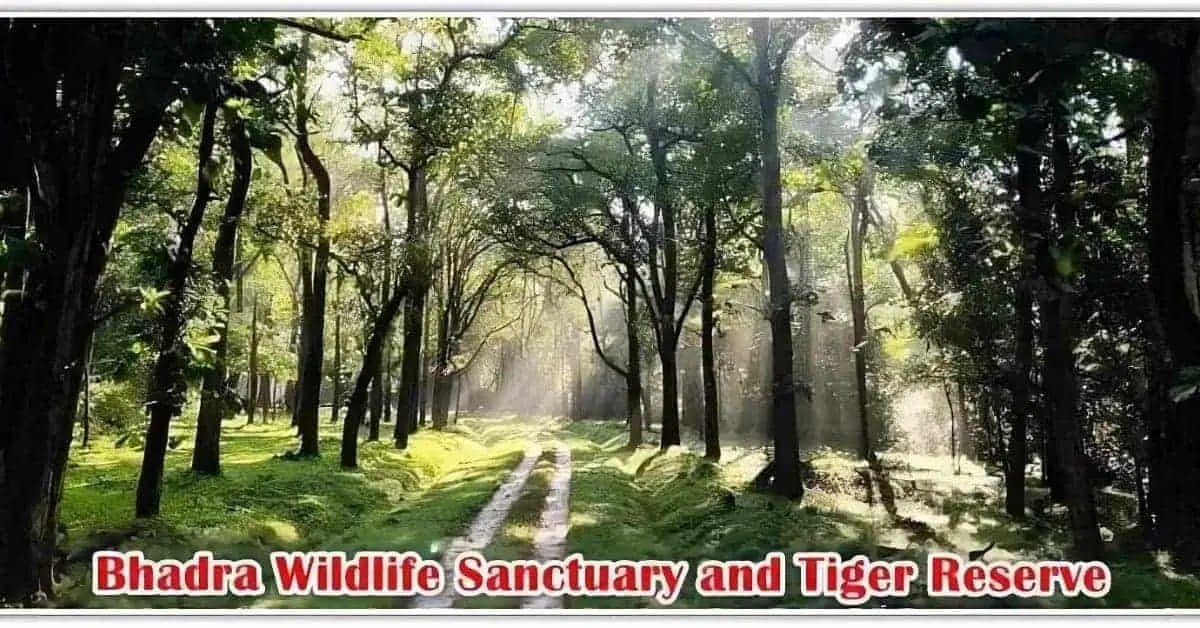
Bhadra Wildlife Sanctuary and National Park in India
My Experience at Bhadra National Park
Bhadra Wildlife Sanctuary near Bhadra Reservoir is a perfect place for a safari, like Jim Corbett National Park. I visited the sanctuary in the evening. Our Bhadra and Muthodi safari started at 3:30 p.m., but I reached the place at 3 pm because of the limited availability of jeeps and buses. Jeep charges are 400 rupees per head.
The ride through the forest was decent and took 2.5 hours. It would help if you were lucky enough to spot the animals. On my trip, I spotted hornbills, monitor lizards, deer, Indian Bison, elephants, and a few birds.
As we went deep into the forest, I was lucky to spot the Indian Gaur twice. Throughout my Bhadra forest journey, none of them were spotted by us. Everything was perfect, and the boat ride made my trip more memorable.
Information from my experience:-
- A jeep safari to Bhadra Wildlife Sanctuary and Tiger Reserve takes approximately 2-3 hours.
- The packages for visiting Bhadra Wildlife Sanctuary and Tiger Reserve start from INR 400 (approx).
How far is Bhadra Wildlife Sanctuary from Chikmagalur?
Travellers reach Bhadra Wildlife Sanctuary and Tiger Reserve from Chikmagalur (33 km), Shimoga (40 km), Hassan (100 km), Mangalore (213 km), and Udupi (170 km). Bajpe (near Mangalore) is the closest airport, while Shimoga is the nearest railhead.
History of Bhadra Wildlife Sanctuary and Tiger Reserve
Bhadra Wildlife Sanctuary, previously known as the Jagara Valley Wildlife Sanctuary, was established in 1951. It is 492 sq km long and located in the Western Ghats in Chikmagalur and Karnataka’s Shimoga district. The name “Bhadra” comes from the Bhadra River flowing through the lush green forest. In 1998, it was declared India’s 25th tiger project.
Geography of Bhadra Wildlife Sanctuary, Lakkavalli
Bhadra Wildlife Sanctuary and Tiger Sanctuary in India lie amidst lush green vegetation and lofty hills. The reserve comprises more than 100 different species of plants. Dry and moist deciduous forests, semi-evergreen forests, swampy patches, and bamboo and teak plantations adorn this region.
The semi-evergreen forest, known as “Sholas”, treasures medicinal plants. Pure and tall grasses called “Hadloos” grow in the swampy patches. Bamboo shrubs grow along the valley and river and reach a height of 18-24 m. At higher altitudes, short bamboo shrubs and Seebu grow.
Various economically important timber species, such as Rosewood, Mathi, Teak, nandi, Kindal, and Honne, are abundant. Jagara Giant, a 300-year-old teak tree with a girth of 5.21 m, is the major attraction of the sanctuary.
Climate and Temperature Range in Bhadra Wildlife Sanctuary
Climate
The region experiences three well-defined seasons: Autumn (June-October), Winter (November-January), and Summer (February-May). Bhadra Wildlife Sanctuary enjoys rain from both the southwest and Northeast monsoon winds.
During the southeast monsoon, the sky remains cloudy, and heavy downpours with strong winds, lightning, and thunder are experienced. At the same time, the weather remains gentle and bright, with steady precipitation when the northeast monsoon wind blows.
Mostly, the climate of Bhadra Sanctuary remains relatively healthy and pleasantly cool.
Temperature
During summer, the daytime temperature can reach 36 degrees Celsius. At the same time, it drops to 10 degrees Celsius during winter. For most of the year, Bhadra Wildlife Sanctuary and Tiger Reserve hover between 18 degrees to 30 degrees Celsius.
Bhadra Wildlife Sanctuary’s famous animals
Bhadra Wildlife Sanctuary was named a Tiger Reserve in 1998 by the Indian Government. Project Tiger was an initiative taken by the Indian Government in the ’90s to demarcate areas with increasing (endangered species) Bengal tiger populations as Tiger Reserves. The sanctuary is also known for its impressive population of elephants, bison, black leopard, deer, gaur, boar, sloth bear, wild cat, jackal, etc.
How many tigers are there in Bhadra Wildlife Sanctuary?
Bhadra National Park has the highest population of tigers out of all other sanctuaries and national parks in Karnataka.
Currently, Bhadra is the 25th tiger reserve under this tiger reserve project, with an increase to 40 tigers from 32.
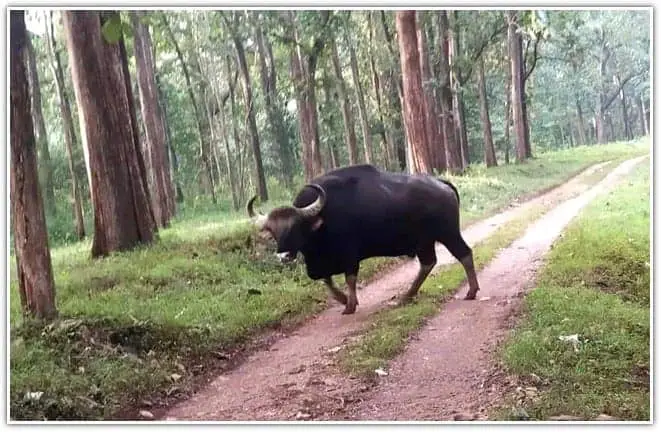
Birds in Bhadra Wildlife Sanctuary and Tiger Reserve
Bhadra Wildlife Sanctuary houses over 250 species of Avian fauna. Birds like the great black woodpecker, Malabar parakeet, Peacock, Parrot, Munia Bee-eaters, grey junglefowl, great pied hornbill, Indian treepie, Partridge, Pigeon, four species of hornbill, racquet-tailed drongo, Malabar whistling thrush, black-naped flycatcher, etc. are found here same as Chintamani Kar bird sanctuary.
Butterflies in Bhadra Wildlife Sanctuary, Lakkaval,li Karnataka
Bhadra Wildlife Sanctuary is home to over 56 exotic species of butterflies. The famous butterflies at Bhadra are the baronet, crimson rose, blue pansy butterfly, tailed jay, great orange tip, yamfly, southern birdwing, bamboo tree brown, etc.
Reptiles in Bhadra Wildlife Sanctuary
Bhadra comprises over 43 species of reptiles. The most common reptiles found in the reserve are vine snake, king cobra, common wolf snake, ordinary Indian monitor, Russell’s viper, Draco or gliding lizards, rat snake, olive keelback, marsh crocodiles, common cobra, bamboo pit viper, etc.
Bhadra Wildlife Sanctuary Flora and Fauna
The highlands of the Western Ghats and the river Bhadra comprise the forest ecosystem and contribute to the said diversity.
The vegetation found here is typical of peninsular India. The forest is a dry deciduous type with deciduous and tropical trees in the majority. To date, 120 varieties of plant life have been observed here. These include Teak, Rosewood, Mathi, Honne, Nandi, Kindal, Bamboo, etc.
Fauna, on the other hand, is not restricted to only tigers and elephants. Carnivores other than tigers include panthers, leopards, jackals, bears, wild boars, and panthers. Sambar, spotted deer, mouse deer, barking deer, sloth bear, mongoose, porcupine, and gaur are commonly seen here.
Birds like junglefowl, red spurfowl, painted bush quail, Osprey, pigeons, great black woodpeckers, doves, etc, are found here, like in Sultanpur National Park.
How to reach Bhadra Wildlife Sanctuary
Bhadra Wildlife Sanctuary is easily accessible in many ways. Well-defined roads allow daily public transport from different places in the state to here. You can reach here by train, by air or by road. Chikmagalur to Bhadra Wildlife Sanctuary is 79 km through SH 57. Bangalore to Bhadra Wildlife Sanctuary distance is 283.4 km through NH 48 and SH 24
- By Train: Kadur is the nearest railway station to the tiger reserve. It is 51 km from the forest, which can be covered in an hour by car.
- By Air: Mangalore Domestic Airport is the nearest airport, 185 km from the sanctuary. Cars and buses can take you to your destination.
- By Road: NH 75 connects Bhadra Wildlife Sanctuary to Bangalore, Kunigal, Channarayapattana, Hasan, Belur, and Chikmagalur. Travelling from Bangalore to Bhadra takes more than five hours.
Bangalore to Lakkavalli Bhadra Wildlife Sanctuary
The distance between Karnataka’s capital, Bangalore, and Bhadra Wildlife Sanctuary at Lakkavalli is 285 km.
Distance from Shimoga to Bhadra Wildlife Sanctuary
The distance between Shimoga and Bhadra Wildlife Sanctuary is 32.5 km.
Distance from Jaipur to Bhadra
Jaipur to Bhadra distance is 12.9 km via Shipra Path, which takes 27 minutes via car.
Chikmagalur to Bhadra Wildlife Sanctuary distance
The distance between Chikmagalur and Bhadra Wildlife Sanctuary is 79 km.
Bhadra Wildlife Sanctuary entry fee
Bhadra Wildlife Sanctuary is open daily in two shifts—morning and afternoon. It’s open from 6:30 a.m. to 9:30 a.m. and 3:30 a.m. to 6:30 p.m. We reached here in the second half. Entry is allowed only by forest jeep safaris. The ticket fee for both shifts is the same. The adult ticket price is Rs. 400. For children below age 10, it’s Rs. 200.
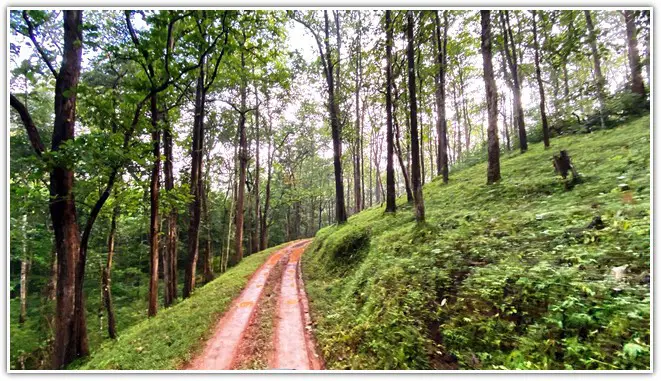
Best time to visit Bhadra Wildlife Sanctuary
October to February are the ideal times to visit Bhadra Wildlife Sanctuary. As it’s the dry season, your forest experience will be completed peacefully without any accidental rain to ruin it. Temperature is also on the lower side during this period.
Bhadra Wildlife Sanctuary timings
| All Day | Morning Timings | Afternoon Timings |
| Monday | 6:30 am to 9:30 am | 3:30 am to 6:30 pm. |
| Tuesday | 6:30 am to 9:30 am | 3:30 am to 6:30 pm. |
| Wednesday | 6:30 am to 9:30 am | 3:30 am to 6:30 pm. |
| Thursday | 6:30 am to 9:30 am | 3:30 am to 6:30 pm. |
| Friday | 6:30 am to 9:30 am | 3:30 am to 6:30 pm. |
| Saturday | 6:30 am to 9:30 am | 3:30 am to 6:30 pm. |
| Sunday | 6:30 am to 9:30 am | 3:30 am to 6:30 pm. |
The sanctuary timing is from 6:30 am to 9:30 am and from 3:30 pm to 6:30 pm before sunset.
6 Things to Do at Bhadra Wildlife Sanctuary
- Wildlife safari: Explore the jungle by jeep, boat, or canter safari.
- Trekking: Trek the beautiful mountain ranges of the Western Ghats for an adventure day.
- Island camping: Camping is allowed on the islands of the Bhadra River. Explore the wild in a new way through island camping.
- Bird watching: Bhadra Wildlife Sanctuary is filled with different varieties of birds, attracting tourists from everywhere.
- Rock climbing: Try rock climbing on the acclaimed highest peak of Karnataka, Mullayanagiri Range in Chikmagalur.
- Boating: The River Tern Lodge provides boating facilities for guests on the Bhadra River.
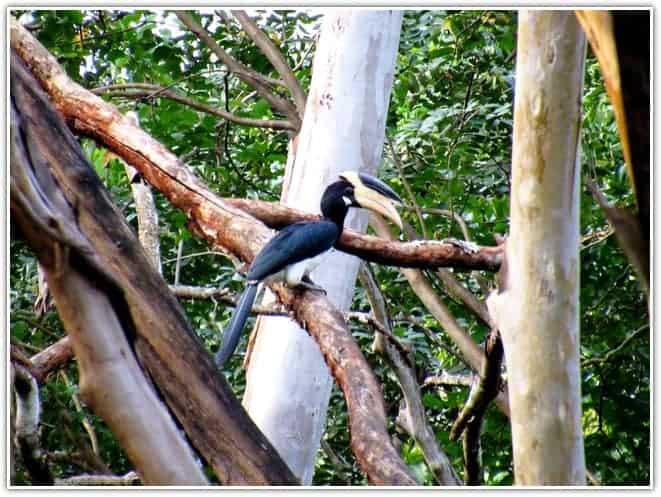
Read
- Alipore Zoological Garden Kolkata | Chiriakhana entry, timings, animals
- Ballavpur Wildlife Sanctuary | Deer Park Bolpur West Bengal
- All about Epping Forest and 9 walks
Rules and regulations followed in the Bhadra Wildlife Sanctuary
- Indians must carry government identification proof.
- Foreigners must carry their valid and respective passports.
- Booking for the Muttodi gate is made offline.
- Boat rides for INR 400 (approx) are available for the Lakkavalli gate.
- Visitors must use face masks and shields.
- Visitors must carry drinking water, mosquito repellent cream and a first aid kit.
- Tourists must wear clothes that camouflage with their surroundings (like olive green, khaki, etc.). Guests must wear full sleeves and full pants.
- You must not use essential oils and perfumes.
- Wear covered footwear. Sandals and chappals are prohibited.
- A visitor must not litter the park.
- The use of plastic and other non-biodegradable products is prohibited.
- Smoking, drinking and lighting of fire are strictly forbidden.
- Teasing, shouting, and feeding animals are prohibited.
- Visitors should not use flashlights to capture photos.
- Tourists can only get out of their vehicles at designated places.
3 Types of Safaris in Bhadra Wildlife Sanctuary
1. Jeep Safari
Official jeeps of the Karnataka Forest Department are the only vehicles allowed to enter the forest. Book one of these safaris to see the natural vegetation, birds, and animals. You might also get lucky enough to experience tiger sightings on one of these trips. The accompanying forest ranger acts as a guide for the trip. One jeep can have six tourists with one guide and one driver.
Bhadra Wildlife Sanctuary Jeep Safari timings and cost
Jeep safari slots per tourists’ availability for 2 hours between 6:30 am and 4:00 pm.
The jeep safari costs rupees 400 per head for adults. Ticket prices drop to rupees 200 for children under 10.
2. Boat Safari
The boat safari is unique to this sanctuary. Only a few other places conduct safaris on waterways. It’s a great way for bird watchers and enthusiasts to explore the forest, as boat rides are much quieter than jeeps or buses. The boat safari shows the Bhadra Wildlife Sanctuary’s land and aquatic ecosystems. The safari occurs on the Bhadra River and the reservoir around the forest.
Bhadra Wildlife Sanctuary Boat safari timings and cost
Bhadra Wildlife Sanctuary Boat safari timings are from 6:30 am to 4:00 pm.
A boat can accommodate a maximum of 6 people. The cost per head starts at 800 and can reach 2000, depending on the boat’s infrastructure and condition.
3. Bus or Canter Safari
The bus or canter safari follows a similar pathway to the jeep safari. This bus takes tourists deep into the forest and shows them the beauty of the wild. Being bigger in structure, it avoids narrow and more rugged areas, but the experience remains unmatched.
A bus or a coach can take 25 visitors at once. The ticket price is 300 rupees per person.
Bhadra Wildlife Sanctuary Bus or Canter Safari timings
Bhadra Wildlife Sanctuary Bus or Canter Safari timings are from 6:30 am to 4:00 pm.
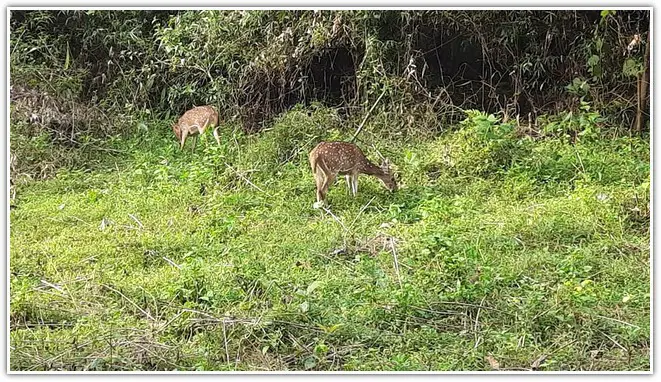
Bhadra Wildlife Sanctuary Stay
Most accommodations are found in the nearby cities of Bhadravathi and Shimoga. Regular hotels, homestays, resorts, and guest houses are abundant for tourists who want to spend a beautiful holiday. A few accommodations are available near the forest, at the foothills of the Western Ghats, or in the jungle itself. Some of them are as follows:
River Tern Jungle Resort, Bhadra Wildlife Sanctuary
Out of all the resorts and homestays, the River Tern Jungle Lodge is the closest to the Bhadra Tiger Reserve. They have their restaurant, too. It’s on a small highland at the edge of the Bhadra reservoir, named after the Tern birds that flock to the nearby island during the breeding season.
This resort offers a view of the wild and mysterious jungle and calm water. It also offers safaris to explore the jungle. Other activities provided by the resort include Kayaking, swimming, and more. The in-house restaurant offers both vegetarian and non-vegetarian buffets. The resort is 4 km from the entrance of Bhadra Wildlife Sanctuary.
Bhadra Wildlife Sanctuary Govt Guest House
The Bhadra Wildlife Sanctuary Government Guest House is also on the bank of Bhadra Reservoir. It’s a cheaper option than Tern Resort. The Forest Department of Karnataka maintains it. The infrastructure of this accommodation is homely and straightforward, but the view is mindblowing.
8 Places to Visit near Bhadra Wildlife Sanctuary
1. Mullayanagiri Peak
Mullayanagiri Peak is among the most well-known peaks of the Western Ghats in Karnataka. A mere 45-minute drive will take you to this beautiful peak from the sanctuary. It’s part of the Baba Budan Giri Hills and reaches up to 1930 m above sea level. In recent years, Mullayanagiri has become a favourite hiking route. The trek to the top is moderately difficult. The adventure and view add to the tourists’ adrenaline, making the spot memorable.
2. Hebbe Falls
Hebbe Falls is located in the beautiful Kemmangundi hill station in Chikmagalur. The waterfall cuts through the mountains and descends on a coffee plantation. The water is rumoured to have healing properties. The rumours originated from medicinal plants on the riverbank that formed the falls. For this reason, many people are attracted to this place and go for a dip in the water to check the healing properties themselves.
3. Jhari Waterfalls
Jhari Waterfalls, or Buttermilk Falls, are 24 km from the Chikmagalur forest. This magnificent waterfall cuts through the steep mountain slope to drop down and form a small pool at its foot. Tourists often visit the waterfall for its natural beauty. Some are also found swimming in the pool for a splash of freshness.
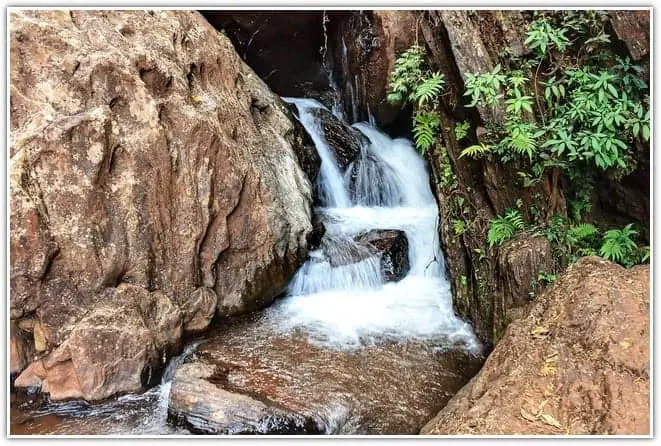
4. Belavadi
Belavadi is a small village 29 km from Chikmagalur. It is famous for its Veera Narayana Temple and Belavadi Temple. The temple is known to be 1000 years old. It’s built in the Hoysala architectural style and is an important historical element of the state.
5. Coffee Plantations
Southern India is well known for its coffee and extensive coffee plantations. Many famous towns and hill stations are known for their coffee plantations, and Chikmagalur is one of them. Most plantations provide homestays for tourists to spend the night in the coffee vicinity. A few of these homestays are just a stone’s throw from Bhadra Tiger Reserve. Visit these for the incredible scenic beauty or a pleasant hike through the plantations.
6. Inam Dattatreya Peetha
Inam Dattatreya Peetha is a symbol of religious harmony. It is structurally a cave on top of the Baba Budan Giri Hills. Historians say this place has provided Guru Dattatreya and Hazrat Dada Hayath Mir Khalandar shelter.
People of any religion can visit this cave. The journey to the cave is also beautiful. You can hike the mountain or ride a car on the circling mountainous roads.
7. Hirekolale Lake
Hirekolale Lake was developed solely to provide irrigation water to Chikmagalur and surrounding villages. This artificial lake is located in an exquisite location. Its view of the surrounding green hill ranges makes it a postcard-worthy scene. Sunrises and sunsets from here look even more magical.
8. Bhadra Dam
Excellent sunset and a vast forest area to watch from the Bhadra Dam.
12 Tips before you visit Bhadra Wildlife Sanctuary
- Wear sun-shielding gear like caps and sunglasses during your safari to save yourself from the heat.
- Cell reception is not very good at Bhadra Wildlife Sanctuary and the surrounding areas. Ensure to carry a SIM card that can provide network connections in remote areas.
- Book your safari through the hotel to avoid any unnecessary hassles.
- Wear dark-coloured clothes on your safari trip as bright colours might agitate elephants and other wild animals who, in turn, might attack you.
- Try to be as quiet as possible while inside the forest. Any unnecessary noise might be dangerous.
- Always pay attention to the forest ranger and follow his instructions strictly.
- October to February is the ideal time to plan your trip to Bhadra Wildlife Sanctuary. The weather is clear of unnecessary rains, and the temperature is also on the cooler side. Overall, a favourable climate persists during this period.
- Visitors must carry cameras to capture the beautiful flora and fauna.
- Bhadra comprises insects and mosquitoes. Thus, it’s recommended to carry mosquito repellent.
- It would be best to carry a pair of binoculars to spot the animals and birds that hide away from the jeep trail.
- Bhadra Wildlife Sanctuary has a team of well-trained physicians, but people must carry a first aid kit for emergencies.
- Medical Facility – The closest hospital to Bhadra Wildlife Sanctuary is 15 km away. A faculty team at Bhadra imparts emergency first aid services if the need arises during the trip.
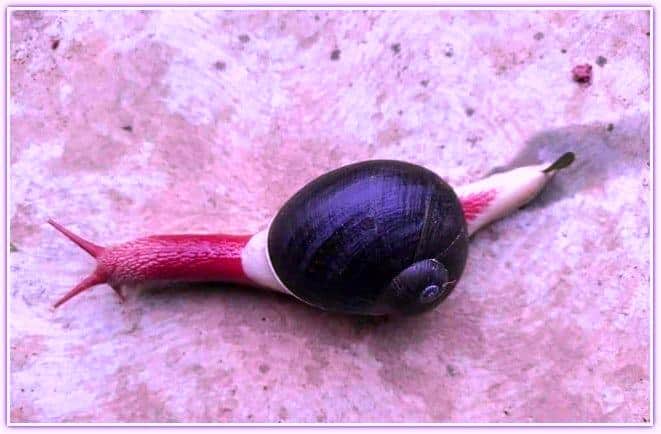
Threats to Bhadra Wildlife Sanctuary and Tiger Reserve
- Hunting animals like wild boar poses a significant danger to the sanctuary.
- Poachers kill animals like elephants, spotted deer, and sambar for their tusks, skin, etc.
- Bhadra Wildlife Sanctuary suffers from illegal cutting and smuggling of valuable timber trees.
- The grazing of domestic animals by villagers living on the fringes results in the erosion of fertile black cotton soil.
- Bamboo grows abundantly in the Bhadra sanctuary. These tall and dry bamboos are most prone to wildfires. The failure of rain in 2004 made the forest dry, making it a fire hazard. A wildfire caused damage in the Muthodi wildlife sanctuary area, Lakkavalli, Tanigebylu, and Hebbe Wildlife Ranges.
- Pathological problems and insect attacks have become common since the drought of 2004.
What are the best places to visit in Chikmagalur?
Mullayanagiri Peak, Hebba Falls, Inam Dattatreya Peetha, and beautiful Coffee plantations are some of the best places to visit in Chikmagalur.
Which are the best Wildlife sanctuaries in Bengaluru?
The best wildlife sanctuaries in Bengaluru are Bhadra Tiger Reserve, Nagarhole National Park, Arabithittu Wildlife Sanctuary, Bandipur National Park, and Bannerghatta National Park.
How do I plan a trip to Chikmagalur for 2 days?
It is essential to book your accommodation before arriving at Bhadra Wildlife Sanctuary. Remember to pack your luggage with all your essentials before embarking on a road trip or taking the train to Chikmagalur. Once you arrive, check into your hotel and speak with the staff to book your safari trip at a convenient time. The following day, head out on your safari and explore the other beautiful locations nearby.
How many tiger reserves are in Karnataka?
There are five tiger reserves in Karnataka: Bandipur, Bhadra, Nagarahole, Dandeli-Anshi, and BRT Tiger Reserve.
Where is Bhadra Wildlife Sanctuary located?
Bhadra Wildlife Sanctuary is in the Lakkavalli town of Tarikere Taluk in Karnataka. Ranganathaswamy Temple is a famous landmark near the forest gates.
Can we go in a private vehicle to Bhadra Wildlife Sanctuary?
Private vehicles are not permitted within the boundaries of Bhadra Wildlife Sanctuary; visitors may tour only in jeeps authorised by the forest department.
Are there buses from Shimoga to Bhadra Wildlife Sanctuary?
The distance between Shimoga and Bhadra Wildlife Sanctuary is 32.5 km. Daily buses ply between the two places. The journey to the forest entrance from Shimoga takes 45 to 50 minutes.
Is Bhadra Wildlife Sanctuary worth visiting?
Yes, absolutely. You can watch many tigers and other animals during the safari.
How did the Bhadra WLS help in Project Tiger?
In 1973, the Indian government launched a tiger protection program; Bhadra Wildlife Sanctuary was bought in 1998. It’s the 25th Project Tiger in India, and Bhadra helps fulfil Project Tiger’s aim by protecting them. Currently, there is a considerable population of tigers at Bhadra Wildlife Sanctuary.
Suggestions for improvement in the Bhadra Wildlife Sanctuary
The major problem faced by Bhadra Wildlife Sanctuary is cattle grazing. There is a growth in the human population living in villages around the sanctuary. Cattle carry many mouth and foot diseases, and it might be transmitted to the herbivores living in the sanctuary. Thus, officials must control the overgrazing problem at Bhadra Wildlife Sanctuary.
Articles:-
- Valki Machan Tour | Kolkata to Valkimachan Bardhaman West Bengal
- Gurgaon Sultanpur Bird Sanctuary timings, entry fee
- Where is Betla National Park? Address, Timings, Entry Fee
- Tropical and Subtropical Dry Broadleaf Forests
- Gir National Park in Gujarat is famous for which animal?
- Different Types of Forests in India
- How to reach Ranthambore National Park
- Turahalli Forest cycling trails, trekking, hiking, bike ride